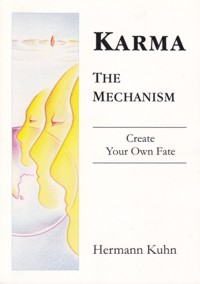
Sa yathanama (22)
The character and intensity of a karmic manifestation always mirrors the type of activity that caused its binding. (22)
When karma activates, it always manifests the character of one of the eight main groups of karma, - it always stimulates activity in the area of life in which it was caused.
For example: Karma that obstructs access to the five channels of knowledge manifests an inability to come in contact with knowledge. How this inability presents itself - e.g. as missing information, the absence of a suitable teacher, the lack of time for studying, disinclination to learn etc. - depends on the subtype of the respective main group of karma. Karma whose character it is to obstruct access to knowledge, can e.g. never determine the duration and place of an incarnation.
The intensity in which karma manifests, reflects the 'drive' and force with which we pursued the activity that originally caused the binding of this particular karma. In this process the number of karmic molecules that activate simultaneously determines the degree of intensity with which karma manifests.
The subtypes of karma that determines the duration and place of future embodiment(s) (ayu) and karma that prevents insight and understanding (darshana-varana) always manifest the exact theme that was originally bound.
The subtypes of the other main types of karma, i.e.:
- karma that causes delusion (mohaniya)
- karma that obstructs access to the five channels of knowledge (jnana)
- karma that determines our feeling of life (vedaniya)
- karma that determines form and features of our body (nama)
- karma that determines the status we carry in our social environment (gotra)
and - karma that causes obstruction in life (antaraya)
can manifest in a different subtype than the one originally bound. Yet they always manifest the theme of the respective main group.
 Hermann Kuhn
Hermann Kuhn
